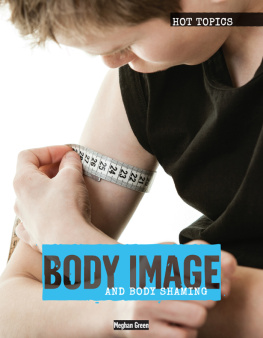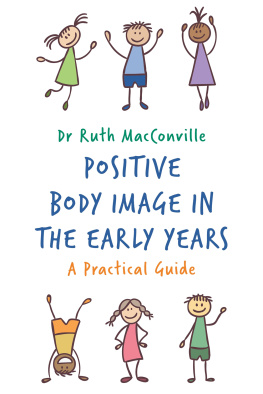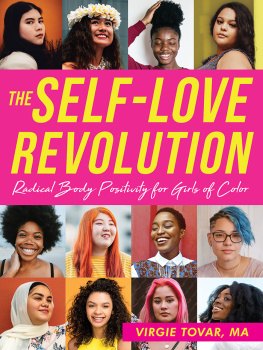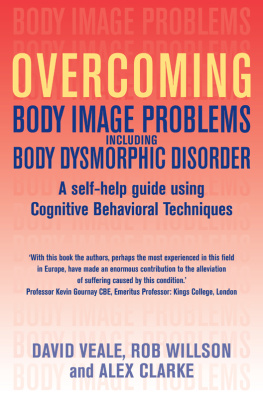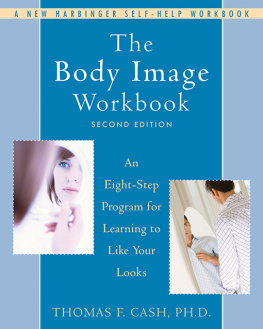Contents
- Cover
- FOREWORD
- INTRODUCTION
- CHAPTER 1
- CHAPTER 2
- CHAPTER 3
- CHAPTER 4
- CHAPTER 5
- CHAPTER 6
- NOTES
- DISCUSSION QUESTIONS
- ORGANIZATIONS TO CONTACT
- FOR MORE INFORMATION
- INDEX
- PICTURE CREDITS
- ABOUT THE AUTHOR
CHAPTER 4
The Problem with Advertising
A lthough the media and advertising are intertwined, advertising is directly concerned with selling products, while the media is mainly for entertainment. Ads can be found everywhere, including magazines, billboards, buses, benches, on TV, and online. They can also be found within the media; for example, a particular clothing line may provide the wardrobe for a popular TV actress, making people want to buy the type of clothes she wears so they can imitate her look.
Many advertisements use models who live up to the cultural standard of beauty to sell the products. This can make people insecure about their own body, so they buy the product if they think it will change how their body looks. Other times, they buy the product because they are attracted to the person in the ad. However, seeing all of these tall, thin, mostly white models in ads can contribute to a poor body image, since advertisements sometimes rely on making people feel bad about their body. This is also a dangerous industry for the models, who are constantly told they need to be thinner. People who are viewing these ads and wishing for the models body may not realize that in some cases, the model has been starving herself.
Some progress has been made recently on changing this culture. The New York Times reported that a Gucci ad was banned in Britain because the Advertising Standards Authority ... ruled that the ad was irresponsible and that the model looked unhealthily thin, fanning a perennial debate in the fashion industry over when thin is too thin.43 France has also put regulations in place, requiring models to provide a doctors note saying they are healthy enough to work and banning agencies from hiring anyone who does not have one. France also requires Photoshopped pictures to be labeled.
ADS CREATE A FANTASY WORLD
Ads sell a great deal more than products. They sell values, images, and concepts of success and worth, love and sexuality, popularity and normalcy. Jean Kilbourne, creator of the documentary Killing Us Softly: Advertisings Image of Women
Jean Kilbourne, Beauty ... and the Beast of Advertising, Center for Media Literacy. www.medialit.org/reading-room/beautyand-beast-advertising .
In many countries, the public has often criticized the use of sex or sexuality in advertising, complaining that these images objectify male and female bodies and sexualize adolescent bodies. Furthermore, since advertisers frequently use thin female models and muscular male models, these advertisements set up unrealistic goals and help create body image dissatisfaction. The vast majority of advertising is also heteronormative, meaning that it idealizes traditional gender roles and beauty standardswhere people want men to look and act one way and women to look and act a different wayand ignores the LGBT community. Most advertising is designed to get women to buy a product so they can attract a man, or vice versa. Women in advertising are almost always feminine, with long hair, makeup, and dresses, even though some lesbians are butch. Butch lesbians may receive the message, either from advertisements or direct comments from friends and relatives, that they are ugly because they dress like men, and femme lesbians may meet people who believe that all lesbians are butch, therefore femme lesbians cannot be real lesbians.
Because gay men feel the same pressure as straight men to be strong and fit, only more intensely, they are not immune to the ads that show muscular men as the ideal body type, and because of this, many may develop eating disorders or turn to steroids.
The Beginning of Miss America
In 1921 in Atlantic City, New Jersey, a group of community leaders decided on a scheme to promote tourism over Labor Day weekend. The idea was a beauty contest, originally called the Atlantic City Pageant, but later renamed Miss America. Although the idea for a beauty pageant was not new, the evolution of the Miss America pageant modernized the idea of a beauty contest by initiating swimsuit and other competitions. The pageant was first televised in 1955, and during the 1960s, it was one of the highest rated programs on television. Despite the growing popularity of the program, however, social critics wondered whether the Miss America contest truly represented all American women.
The contest rules for Miss America had frequently placed a number of limitations on contestants, including age, height, and weight. For much of the contests history, limitations were also placed on skin color, and the issue of ethnicity was suppressed. Early Miss America contestants, then, were overwhelmingly white, Anglo-Saxon, and Protestant, a combination commonly referred to as WASP. For this reason, the Miss America contest has often been accused of offering a narrow idea of body image in the United States.
Advertising Targets Young Adults
Author Alissa Quart has written, The marketing of products to teenagers has existed since the word teenager was coined by Madison Avenue in 1941.44 Magazines such as Girls Life, Seventeen, Cosmo Girl, Teen Vogue, Sports Illustrated Kids, MH-18, and Boys Life imitate adult magazines with similar names, but target their ads at young adults. Like advertisements for adults, advertisements for teens and preteens in magazines, radio, and television use body images in an attempt to sell everything from soft drinks to makeup to MP3 players.
Relying on body image in advertising for the teen market has perhaps been even more controversial than advertising for adults. Many social critics believe that advertisers play on teens insecurities to sell products that promise to make the young consumer more attractive. Furthermore, they argue, advertising to young adults bypasses parental oversight. Others argue that teens are capable of understanding the methods advertisers use and that buying products to enhance body image builds self-esteem.
ADVERTISING IS ONLY PART OF THE PROBLEM
Does anybody ever stop and think that maybe, just maybe, these children who are too skinny, depressed, or fat end up this way for other reasons? Ill answer for youno, they dont because Barbie is an easy scapegoat; shes plastic.
Macy I., blogger on Teen Ink
Macy I., Mattel, McDonalds, Only Scapegoats for Body Image, Teen Ink, February 2, 2009. www.teenink.com/opinion/all/article/48325/Mattel-McDonalds-only-scapegoats-for-body-image/ .
Vanity Sizing
One trend in the fashion world that has caused a lot of negative body issues is the fact that womens clothing sizes are different from brand to brand. Mens clothing is sized by the measurements of the persons body, but womens sizes are just numbers or letters such as 12, 14, S, XS, etc. Because these do not really mean anything, different brands can use different measurements and put the same size on it. For example, a person may wear size 12 jeans from Target, but size 8 jeans from Old Navy. This is sometimes known as vanity sizing because people believe that the stores are trying to make people feel better about wearing bigger sizes; however, manufacturers say it is just because different companies have a different range of sizes. Whether or not the clothes are marked smaller on purpose, the different sizes can negatively affect a persons body image and make it discouraging and time-consuming to find clothes that fit correctly.

